Best Safe Chicken Coop Heater
- January 18, 2024
- 0 comment
If you happen to live in an area with cold winter climates or experience sudden drops in temperature, and you proudly own chickens, you might be pondering whether it’s necessary to provide additional heat to your chicken coop and how to determine the right heat levels for your feathered companions. Finding the delicate balance between keeping your chickens adequately warm and avoiding unnecessary discomfort or health risks requires careful consideration.
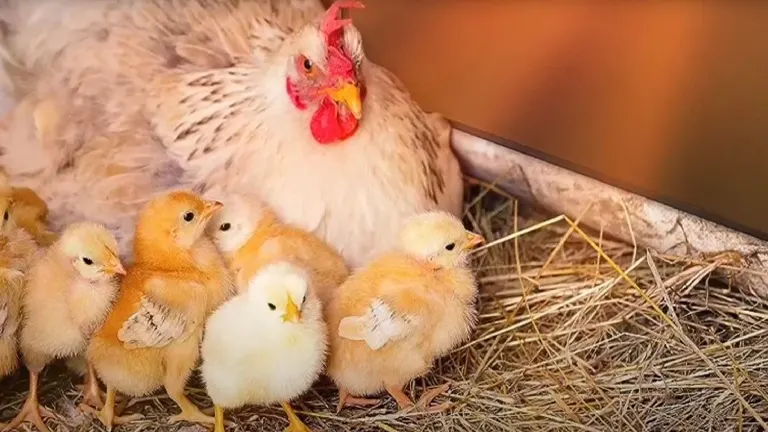
Drawing from our extensive firsthand experience, especially during our time as chicken and honey beekeepers in the subarctic region, where temperatures frequently plummeted to as low as -40 degrees Celsius (equivalent to -40 degrees Fahrenheit), we have gained valuable insights into the intricate art of maintaining ideal conditions for poultry in challenging winter environments.
Our practical knowledge covers the intricacies of temperature management, taking into account factors such as insulation, coop design, and the specific requirements of various chicken breeds. Whether you are thinking about installing heating systems or looking for nuanced strategies to enhance your flock’s natural resilience, our expertise is aimed at assisting you in navigating the complex process of protecting your chickens from the harsh realities of winter.
List Best Safe Chicken Coop Heater:
Determining When to Use Heat in Your Chicken Coop
When managing a chicken coop, it’s essential to recognize the need for heating, particularly during freezing temperatures. This requirement arises primarily to prevent the chickens’ water supply from freezing, ensuring they have continuous access to liquid water for their health and well-being. Implementing heating solutions must be balanced carefully; the goal is to provide sufficient warmth to stop water from freezing, without excessively increasing the coop’s overall temperature. This careful regulation is vital for the welfare of your chickens, considering their natural resilience and ability to adapt to temperature changes.
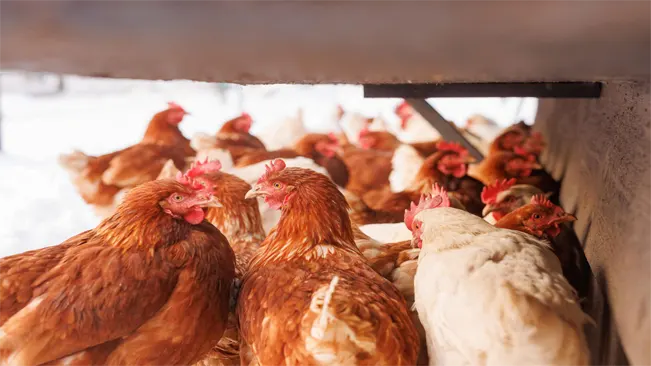
Chickens, unlike humans, have unique adaptations like feathers and a natural ability to withstand temperature variations. They show resilience by roosting at higher levels and huddling together in cold conditions. However, maintaining an uninterrupted supply of liquid water is essential for their health. For a deeper understanding of when and how to introduce heat in a chicken coop, and for practical heating solutions like automated heated chicken waterers, refer to our detailed article. These solutions ensure a consistent and unfrozen water supply, meeting the crucial hydration needs of your flock.
Optimal Chicken Coop Heater
Diverse heat sources and heaters, ensuring safety, can be incorporated into your chicken coop. Consider the following options based on their heat output and safety features.
1. Flat Panel Heaters
Flat panel heaters have gained considerable popularity for use in chicken coops due to their distinctive combination of safety, efficiency, and space-saving design. One of the primary safety features of these heaters is their lower surface temperature compared to traditional heating solutions.
Specifications
- Manufacturer: Cozy Products
- Product Dimensions: 18.98 x 0.63 x 12.01 inches
- Item Weight: 4.93 pounds
- Material: Plastic
- Specific Uses For Product: Indoor
Unlike coil heaters or propane heaters, flat panel heaters do not have exposed heating elements that can ignite bedding or other flammable materials commonly found in chicken coops. This reduced risk of fire is a significant advantage, especially in environments where continuous monitoring is not feasible. Additionally, many of these heaters are designed with built-in thermostats or can be easily connected to external thermostats, allowing for better temperature control within the coop.
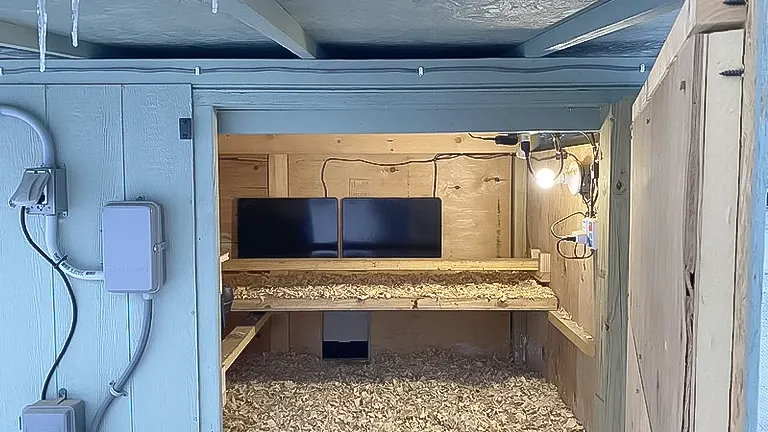
The design of flat panel heaters also plays a critical role in their suitability for chicken coops. Their compact, slim profile allows for easy mounting on walls or ceilings, which not only saves valuable floor space but also minimizes the risk of damage or interference from the chickens. This mounting feature also helps in evenly distributing heat throughout the coop, ensuring a comfortable environment for the birds without creating hot spots.
Furthermore, these heaters often come with the advantage of being energy-efficient, converting a higher percentage of electrical energy into heat, thus reducing operational costs in the long run. Their low maintenance requirements and durability also add to their appeal for use in farm settings. Overall, flat panel heaters present a practical and safe heating solution for chicken coops, balancing the need for warmth with concerns over fire safety and space utilization.
| Pros of Flat Panel Heaters | Cons of Flat Panel Heaters |
|---|---|
| Lower surface temperature reduces fire hazards. | May not be effective in extremely cold or large spaces. |
| Can be mounted on walls or ceilings, saving floor space. | Installation may require some handyman skills and appropriate tools. |
| Converts a high percentage of energy into heat, reducing operational costs. | Initial Cost: Can be more expensive than traditional heating options. |
| Provides consistent heat without creating hot spots. | Not suitable if light is needed along with heat. |
| Typically requires less upkeep compared to other heaters. | May need an external thermostat for temperature control. |
| Lower risk of burns or injuries to chickens. | May not cover a very large area effectively. |
2. Sweeter Heater
The Sweeter Heater is a specialized brand of infrared heater that caters specifically to the needs of small animals and pets, making it an ideal choice for chicken coops. The core feature of this heater is its ability to provide gentle, radiant heat, which is crucial for creating a comfortable and safe environment for chickens, especially during colder months.
Specifications
- Special Feature: Energy Efficient
- Product Dimensions: 40″D x 11″W x 2″H
- Mounting Type: Floor Mount
- Room Type: Living Room
- Heating Coverage: 440 square feet
- Burner Type: Radiant
- Heat Output: 150 Watts
- Item Weight: 7 pounds
Unlike conventional heating lamps or space heaters that can create uneven hotspots and potentially dangerous temperatures, the Sweeter Heater produces a consistent and moderate warmth. This is achieved through its infrared heating technology, which warms objects and animals directly rather than heating the air. This method is not only more efficient but also reduces the risk of fire hazards since it doesn’t get as hot as traditional heating elements. Another significant benefit of this technology is its energy efficiency, as it targets heating directly to the chickens, ensuring that no energy is wasted in warming unoccupied spaces.
The design of the Sweeter Heater is another aspect that makes it highly suitable for use in chicken coops. These heaters are often flat and rectangular, allowing them to be easily mounted overhead or on the side walls of a coop. This versatility in installation helps in maintaining the floor space for the chickens and reduces the risk of the heater being pecked or knocked over.
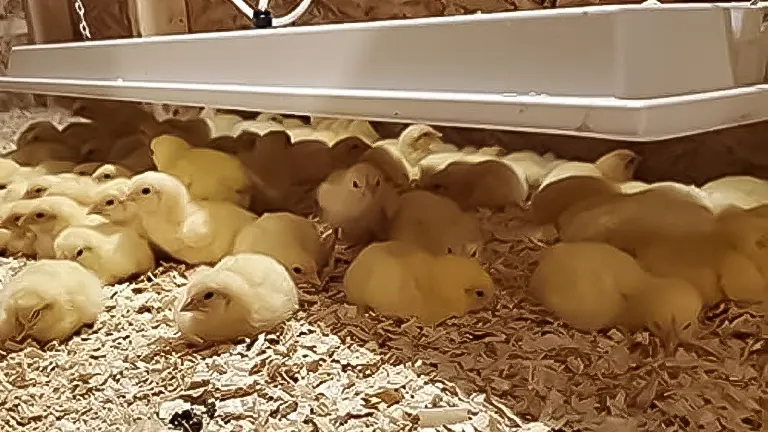
The surface of the heater is also designed to be safe to touch, adding an extra layer of safety for curious birds. Moreover, the Sweeter Heater is available in various sizes, making it adaptable for different coop sizes and the number of chickens. Its ease of installation and low maintenance requirements further add to its appeal for poultry owners.
Additionally, the uniform heat distribution ensures that all chickens get equal access to warmth, which is essential for their health and well-being. Overall, the Sweeter Heater presents an effective, safe, and energy-efficient heating solution for chicken coops, prioritizing the comfort and safety of the animals.
| Pros of Sweeter Heater | Cons of Sweeter Heater |
|---|---|
| Safe Radiant Heat: Provides gentle, infrared heat, reducing the risk of burns or fire hazards. | Generally more expensive than some traditional heating solutions. |
| Energy Efficient: Uses infrared technology to heat animals directly, which is more efficient than heating the air. | Limited Range: The heat is concentrated, which might not cover a large area effectively. |
| No Light Emission: Does not disrupt the natural light cycle of chickens, promoting better health. | Installation Requirements: Needs to be properly installed, often overhead, which could require additional effort or tools. |
| Durable and Low Maintenance: Designed to last long with minimal maintenance needs. | Thermostat: May require an external thermostat for optimal temperature control. |
| Various Sizes Available: Can choose a size that best fits the specific coop dimensions. | Not Ideal for Extremely Cold Climates: May not provide sufficient warmth in very cold environments. |
| Safe for Chickens: The surface is safe to touch, minimizing the risk of injuries to the birds. | Power Dependency: Relies on electricity, so not suitable in areas with frequent power outages. |
3. Oil-Filled Radiator Heaters
Oil-filled radiator heaters are increasingly becoming a popular choice for heating spaces like chicken coops due to their inherent safety and efficiency features. Unlike coil heaters, which have exposed heating elements that can pose a fire hazard, oil-filled radiators encase their heating element within a sealed container.
Specifications
- Form Factor: Pedestal
- Indoor/Outdoor: Usage Outdoor, Indoor
- Product Dimensions: 15.4″D x 6.4″W x 26.1″H
- Mounting Type: Floor Mount
- Heating Coverage: 250 square feet
- Heat Output: 5200 British Thermal Units
- Voltage 120 Volts
- Item Weight: 18.76 pounds
Additionally, oil-filled radiator heaters are known for their durability and low maintenance requirements. Since the oil is permanently sealed inside the heater, it does not need to be replaced or refilled, making it a convenient option for long-term use. The lack of moving parts in these heaters also contributes to their durability and quiet operation, an important aspect when used in a setting like a chicken coop to avoid causing stress to the animals.
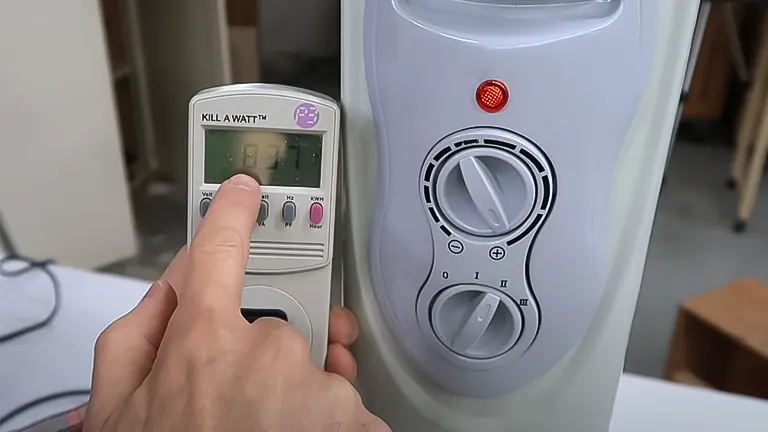
Most models come with adjustable thermostat settings, allowing for precise temperature control, which is essential for the health and well-being of the chickens. Some models also feature safety elements such as overheat protection and tip-over switches, which further enhance their safety profile.
The portability of these heaters is another benefit, as they can be easily moved to different parts of the coop as needed. Overall, oil-filled radiator heaters offer a safe, efficient, and convenient heating solution for chicken coops, ensuring a comfortable and risk-minimized environment for poultry.
| Pros of Oil-Filled Radiator Heaters | Cons of Oil-Filled Radiator Heaters |
|---|---|
| Lower risk of fire hazards due to no exposed heating elements. | Takes time to heat up, which can be inconvenient in rapidly changing temperatures. |
| Provides steady and uniform heat over a prolonged period. | Generally heavier, making them less convenient to move. |
| Maintains heat well, leading to potentially lower electricity costs. | Can get quite hot to the touch, posing a burn risk if not handled carefully. |
| Sealed unit means no need for refilling or replacing oil. | Limited Heating Area: May not be effective in heating large, open spaces. |
| No fan or moving parts, which means it operates silently. | Can be bulky and take up more space compared to other types of heaters. |
| Long lifespan due to fewer mechanical parts. | Heat distribution relies on natural air movement, which can be uneven. |
| Often comes with thermostat control for temperature regulation. | Requires electricity, not suitable for areas with frequent power outages. |
4. Ceramic Heat Emitters
Ceramic heat emitters are a specialized type of heating device often used in reptile enclosures, and they have found a place in chicken coop heating due to their unique characteristics. Unlike traditional bulbs that emit both light and heat, ceramic heat emitters produce only heat, making them an ideal choice for maintaining a consistent temperature in the coop without disturbing the natural light cycle of chickens.
This is especially important for the well-being of chickens, as excessive light can interfere with their sleep patterns and overall health. Ceramic heat emitters work by radiating infrared heat, which warms objects and living beings directly in its vicinity rather than heating the air.
Specifications
- Brand: Fluker’s
- Target Species: Chicken
- Product Dimensions: 3.75″L x 3.85″W x 4.5″H
- Material: Ceramic
- Specific Uses For Product: Outdoor
This method of heating is efficient and can provide a stable source of warmth to chickens, especially during the night or in colder weather. These emitters are generally very durable and have a long lifespan, making them a cost-effective solution in the long term.
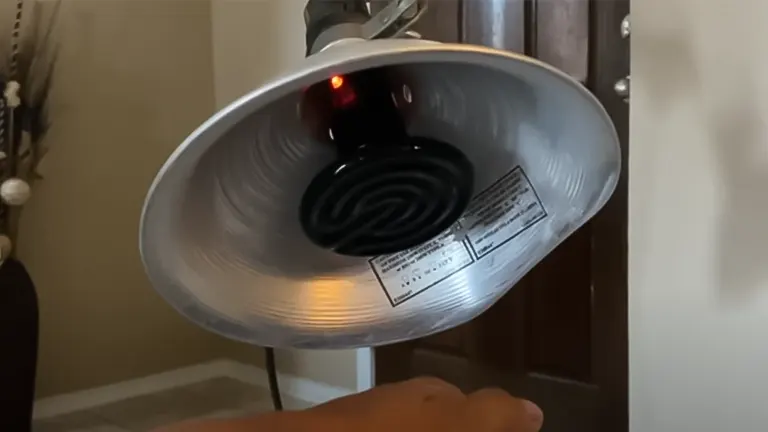
However, there are important safety considerations to bear in mind when using ceramic heat emitters in chicken coops. First and foremost, they must be installed in a proper ceramic socket, as the high temperatures they reach can melt standard plastic sockets, posing a serious fire hazard.
Additionally, it’s crucial to place these emitters at a safe distance from the chickens to prevent burns, as they can get extremely hot to the touch. Ensuring they are out of reach of the chickens and secured in a way that they cannot be knocked over is essential.

Another aspect to consider is the use of a thermostat control with these emitters. Since they don’t emit light, it can be hard to tell when they are on or off, so a thermostat can help regulate the temperature and ensure the coop doesn’t overheat.
Furthermore, adequate ventilation in the coop is necessary to avoid an overly dry environment, which can occur with continuous use of ceramic heat emitters. Overall, when used correctly and with appropriate safety measures, ceramic heat emitters can be an effective and reliable heating solution for chicken coops, providing warmth without the risks associated with light-emitting heat sources.
| Pros of Ceramic Heat Emitters | Cons of Ceramic Heat Emitters |
|---|---|
| No Light Emission: Ideal for maintaining natural light cycles, as it only emits heat. | High Surface Temperature: Can get extremely hot, posing a risk of burns if touched. |
| Efficient Heating: Directly heats objects and animals, making it energy-efficient. | Requires Ceramic Socket: Needs a special socket to withstand high temperatures. |
| Long Lifespan: Durable and typically lasts longer than traditional light-emitting bulbs. | Installation Safety: Must be installed at a safe distance and securely to avoid accidents. |
| Consistent Heat Source: Provides a steady source of heat, ideal for maintaining a stable environment. | No Visual Heat Indicator: Hard to tell if it’s on or off without a separate thermometer. |
| Suitable for Various Animals: Widely used for reptiles, birds, and small mammals. | Thermostat Recommended: Needs a thermostat for optimal temperature control. |
| Safe for Animals: Reduces risk of burns or injuries when properly installed. | Limited Heat Distribution: May not effectively heat large or open areas evenly. |
Ensuring the Well-being of Backyard Chickens in Cold Weather A Necessity?
When it comes to taking care of backyard chickens, they often become beloved members of the family. Naturally, we worry about their comfort and safety in freezing temperatures, leading to debates in households where one person advocates for heating the entire chicken coop while another opposes it.
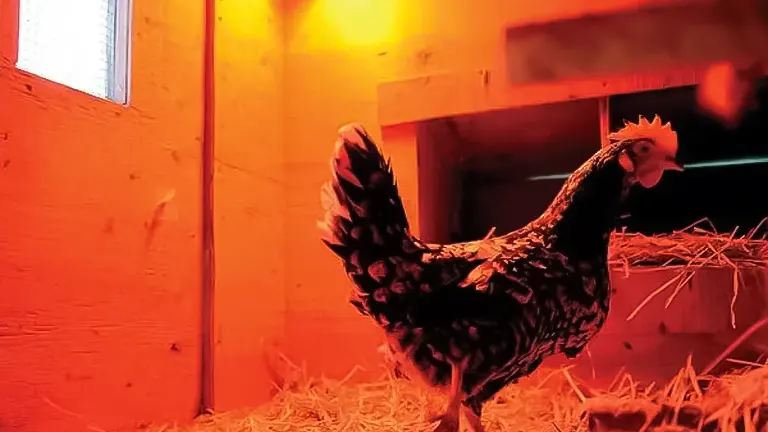
Rest assured, chickens are quite resilient when it comes to cold weather. There are effective ways to keep your chickens warm during winter without relying on electricity, and using typical space heaters in the coop is generally discouraged.
Maintaining an ambient temperature just above freezing is usually sufficient, especially if your coop is well-insulated. Introducing an appropriate heater can help prevent water from freezing without the need for constant monitoring.

Chickens have the remarkable ability to regulate their body temperature beneath their feathers, making it unwise to introduce unsafe heat sources. Whether you have a small or large chicken coop, the primary objective is to ensure that temperatures stay above freezing.
If you are concerned about frozen eggs, consider identifying the winter laying schedule of your birds and check for eggs more frequently during that period to address this issue.
Final Closing Remarks
In conclusion, when selecting the best safe heater for a chicken coop, it’s imperative to balance the needs of the chickens with safety considerations. Heaters like flat panel heaters, oil-filled radiators, ceramic heat emitters, and infrared heaters like the Sweeter Heater are popular due to their safety features and efficiency. Each type comes with its unique set of advantages and potential drawbacks, making it important to consider factors such as the size of the coop, the local climate, and the specific needs of your poultry.
Safety should always be the paramount concern; therefore, choosing a heater designed for animal enclosures, ensuring proper installation, and using thermostats for temperature control are crucial steps. Additionally, it’s vital to regularly check and maintain any heating device to prevent fire hazards. Ultimately, the best chicken coop heater is one that provides a stable, comfortable environment for the chickens while minimizing risks and maximizing energy efficiency. By carefully considering these factors, poultry owners can ensure the well-being of their flock even in colder temperatures.
Frequently Asked Questions
- What types of heaters are safest for chicken coops?
Safe heaters for chicken coops include flat panel heaters, oil-filled radiators, ceramic heat emitters, and infrared heaters like the Sweeter Heater. These heaters minimize fire risks and provide consistent warmth. - Do chicken coops really need a heater?
Whether a chicken coop needs a heater depends on the climate and the breed of chickens. Generally, chickens are quite hardy, but in extremely cold climates, supplemental heat may be necessary to keep them healthy. - How can I safely install a heater in my chicken coop?
Install the heater away from flammable materials, use a guard or mount it out of the chickens’ reach, and ensure it’s connected to a reliable power source. It’s also advisable to use a heater with a thermostat for temperature control. - Are there any fire-safe heating options for chicken coops?
Yes, options like flat panel heaters and Sweeter Heaters are designed with safety in mind, minimizing fire risks. It’s crucial to follow manufacturer guidelines for installation and usage. - How do I choose the right size heater for my coop?
Consider the size of your coop and the number of chickens. Ensure the heater is capable of warming the entire space without overheating it. Some heaters come in various sizes for different space requirements. - Can I use a regular space heater in my chicken coop?
Regular space heaters are not recommended due to fire hazards and potential harm to chickens. It’s better to use heaters specifically designed for animal enclosures. - What temperature should I maintain in the chicken coop?
Chickens generally fare well in temperatures down to freezing, but for comfort, maintaining a coop temperature of around 40-45°F (4-7°C) in cold weather is advisable. - Do ceramic heat emitters provide enough warmth for chickens?
Ceramic heat emitters can be effective for chicken coops, especially when used with a thermostat. They provide consistent, direct heat without light, which is beneficial for chickens. - Is it safe to leave a chicken coop heater on overnight?
Yes, if the heater is specifically designed for chicken coops and installed safely. However, always ensure it’s equipped with safety features like automatic shut-off in case of overheating. - How can I monitor the temperature in my chicken coop?
Use a reliable thermometer inside the coop. Some coop owners opt for digital thermometers with remote monitoring for convenience and accuracy.
Your feedback is invaluable! Please feel free to share your personal experiences and thoughts about the Best Safe Chicken Coop Heater in the comments section below. Your insights can be a guiding light for fellow chicken keepers in making informed decisions!

Edward Smith
Forestry AuthorWoodworking is about more than crafting; it's a harmonious connection with nature, mastering tools, and preserving our environment. I'm here to share my knowledge and experiences with you, forging a future where we can embrace wood's beauty and utility while safeguarding our forests' health and diversity.

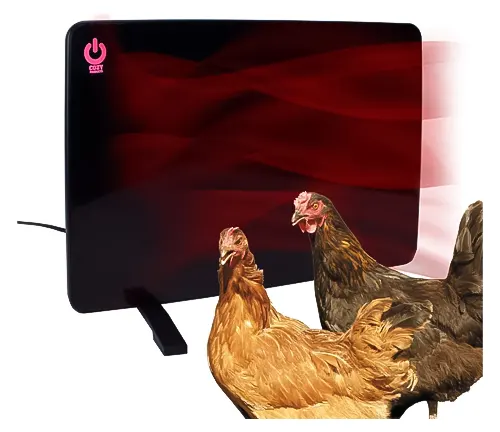

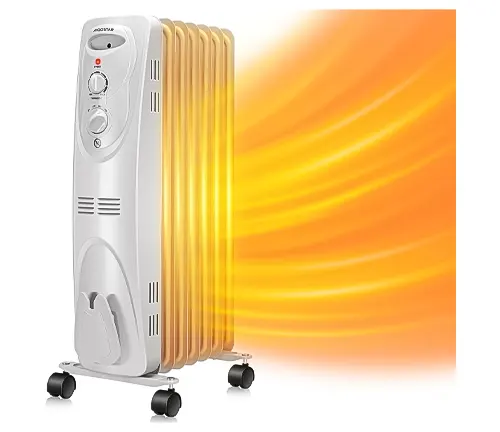
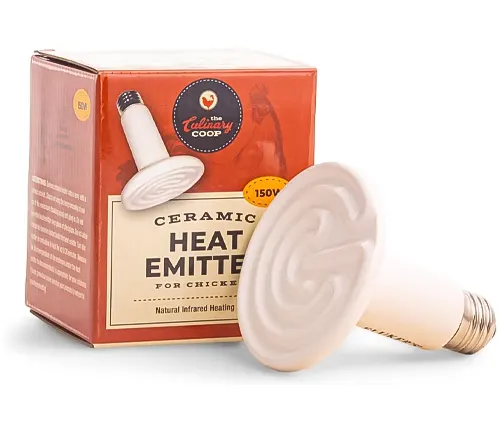






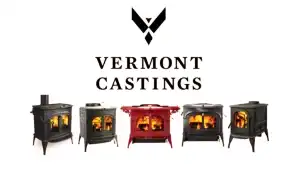



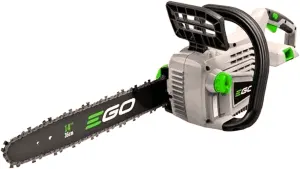

Leave your comment